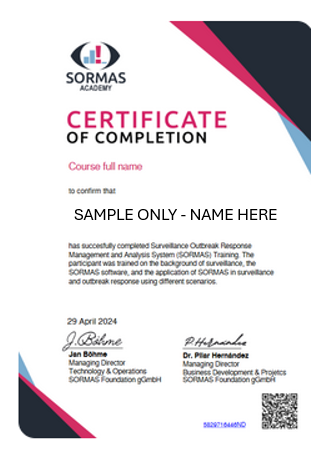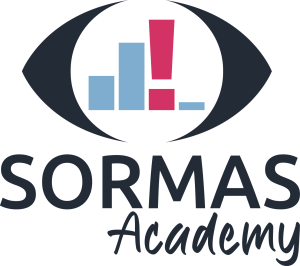 Congratulations - You made it to the end!
Congratulations - You made it to the end!
You have now taken your first steps into the world of the Surveillance Outbreak Response Management & Analysis System (SORMAS), open-source software pivotal in managing and controlling infectious diseases globally.
You have gained an understanding of the purpose of SORMAS, recognized the importance of collaborative efforts in data collection and analysis, and are now inspired to continue building your skills in this area to support your community.
You started by understanding the basic functionalities of SORMAS, covering case management, contact tracing, event monitoring and dashboard data visualization. The course emphasized the role you play, whether as a surveillance officer or a lab manager, in the effective use of SORMAS for disease control and outbreak management. Through interactive activities like webinars, flashcards, quizzes, and games, you engaged with the content, reinforced your learning and understanding of key concepts.
So it's goodbye from me Dr Ominio and a huge thank you from all of us for joining the global team to fight disease outbreaks together.
There is a vibrant global support community for SORMAS.The community surrounding SORMAS includes health professionals, developers, and public health officials who contribute to the development, deployment, and improvement of the system.
To find specific resources like forums, documentation, or the official GitHub repository, you can visit the official SORMAS website or search for SORMAS on GitHub. If you need direct links or more specific information, please let me know! The support community involves:
SORMAS Foundation Website

|
MORE COURSES
|
SORMAS Community
|
SORMAS Wiki
|
Training and Webinars
|
Professional Networks
|
GitHub Repositories
|
|
You can continue learning about SORMAS and help newer people to keep practicing and remembering.
|
This platforms allow users to discuss problems, share solutions, and exchange knowledge about the system.
|
Comprehensive guides and FAQs are available to help users understand how to use SORMAS.
|
Periodic training sessions and webinars are conducted to educate users on new features and best practices.
|
Discussions and support networks on platforms like LinkedIn, Twitter, or specific public health forums.
|
Developers and users can report issues, request features, and contribute to the codebase.
|
 "Earn your Digitial Certificate by completing the final test"
"Earn your Digitial Certificate by completing the final test"
 Congratulations - You made it to the end!
Congratulations - You made it to the end!